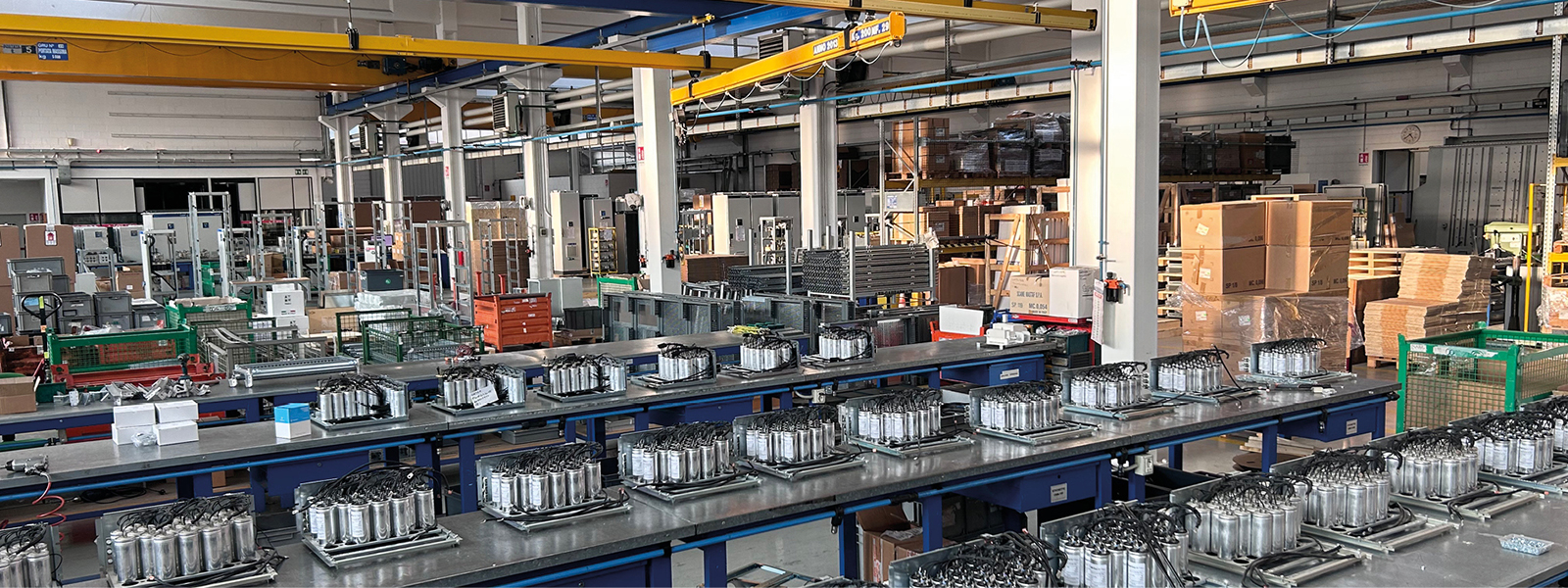Ortea Next, through the integration of the Ortea, Icar and Enersolve brands, offers a full range of power quality and energy efficiency solutions.
In particular, the acquisition of the ICAR brand, has made it possible to offer solutions in the field of industrial power factor correction.
The solutions offered range from fixed and automatic power factor correction systems to the most sophisticated detuned and absorption filters, designed to meet the challenges posed by harmonics and nonlinear loads. The choice of the most suitable system, both in terms of size and configuration, is made based on a thorough analysis of the specific needs of the plant, thus ensuring maximum power factor correction effectiveness.
HOW TO SIZE AND CHOOSE A POWER FACTOR CORRECTION SYSTEM
To correctly correct power factor of a LV electrical system we must start from the target we want to achieve:
- a higher power factor compared to that imposed by the energy authority for excess of reactive energy consumption, so to avoid penalties and / or risk detachment from the network;
- the reduction of currents (and therefore of joules losses and voltage drops) in longer and intensively loaded plant sections.
Depending on the electrical loads features present in the system (working cycle, power, power factor), topology (radial, ring, etc) and the extension of the plant itself, once calculated the power factor correction requirement, it will be clear how to size the capacitor bank.
The most common methods are distributed power factor correction (each of the utilities is equipped with its own unit for power factor correction, typically fixed) and centralized power factor correction (a single automatic PFC system is installed and dedicated to the whole plant). It is also possible to create “mixed” solutions according to the peculiarity of the plant.
SELECTION CRITERIA DEPENDING ON THE TYPE OF PLANT
The choice of power factor correction equipment must be made by evaluating the design data of the system or, better yet, your electricity bills.
The choice of the power factor correction type must be carried out according to the rate of harmonic distortion of the plant current (THDIR%) and the ratio between the reactive power QC (kvar) of the PFC bank and LV/MV transformer apparent power AT (kVA).
In particular situations (harmonics coming from other branch of network, presence of rank equal to or a multiple of 3 harmonics) the guarantee of a correct choice of the equipment occurs only as a result of a measurement campaign of harmonic analysis of the network and the appropriate calculations.
STANDARD POWER FACTOR CORRECTION
The standard power factor correction is used in those plants where there are no current heavily deformed (verify the THD% data of the system current, which must be less than THDIR% of the selected power factor correction family) or resonance problems.
If the harmonics presence in the plant is not negligible, are preferred solutions with reinforced capacitors (i.e. with an higher nominal voltage than that of the network).
POWER FACTOR CORRECTION WITH BLOCKING REACTORS
The power factor correction with blocking reactors (this solution is called in different ways in the technical literature such as “blocking filters”, or “detuned filters”, or “detuned power factor correctors”, etc.) is a solution used when a current flows in the electric system with a high harmonic content (THD) and / or with the resonance risk with the MV/LV transformer.
In these cases, the installation of a “normal” power factor corrector, devoid of blocking reactors, can cause the rapid degradation of the capacitors and cause dangerous electrical and mechanical stresses in the components of power plant (cables, busbars, switches, transformers).
Chokes protect the capacitors by harmonics and at the same time exclude the resonances risk; leave without sacrificing the harmonic content of the current system (if you want to reduce the system harmonic content, you must install active or passive filters.
This type of power factor correction is therefore to be preferred for systems with important non-linear loads (lighting not luminescent, power electronics, VSD, soft starters, induction furnaces, welding machines, etc.).
Ortea Next offers two types of solutions with power factor correction with blocking reactors: one with 180Hz blocking frequency (detuned to 3.6 times the line frequency) and another one with 135Hz (2.7). It’s correct noting that the lower the tuning frequency is the more robust is the cabinet, because the reactor should have a larger iron core.
Ortea Next power factor correction solutions with blocking reactor, are made with inductors produced in-house. In addition are used only capacitors with rated voltage higher than that of the network, to ensure strength and durability counteracting the Ferranti effect (permanent overvoltage on the capacitor due to the blocking inductance).
SELECTION OF THE CT, ITS POSITION AND HOW TO CONNECT IT TO THE APFC BANK
The electronic regulator installed on the capacitor bank calculates the power factor of the plant that has to be corrected by measuring a phase to phase voltage and the related 90° lagging current.
The wiring which is necessary to obtain the signal is realized inside the APFC bank, therefore for a correct operation it is necessary to properly choose, position and wire the CT, which is not included in the capacitor bank.
The CT has to be chosen according to the characteristics of the load that has to be compensated and to the distance between its point of installation and the regulator:
CONCLUSIONS
Ortea Next’s technologically advanced approach to power factor correction and power quality management results in solutions that not only meet companies’ immediate operational needs but also contribute to their long-term sustainability. Through continuous innovation and scrupulous attention to the specifics of each project, Ortea Next confirms itself as a strategic partner for industry, guiding its customers towards a more efficient and sustainable energy future.
Discover Ortea’s range of LV power factor correction systems: https://www.orteanext.com/products/lv-power-factor-correction-systems/







